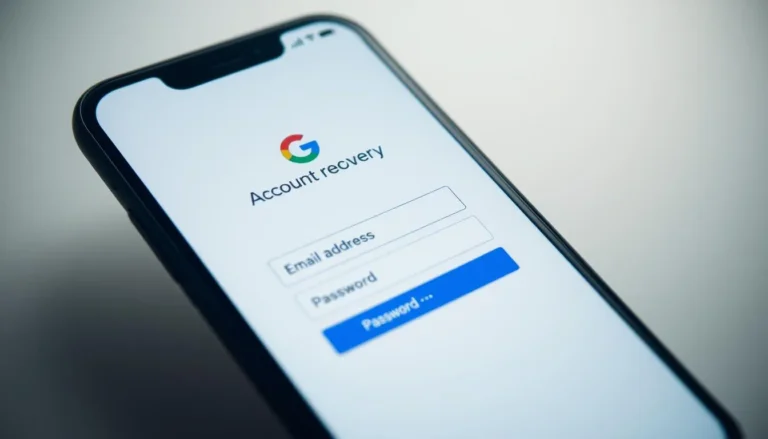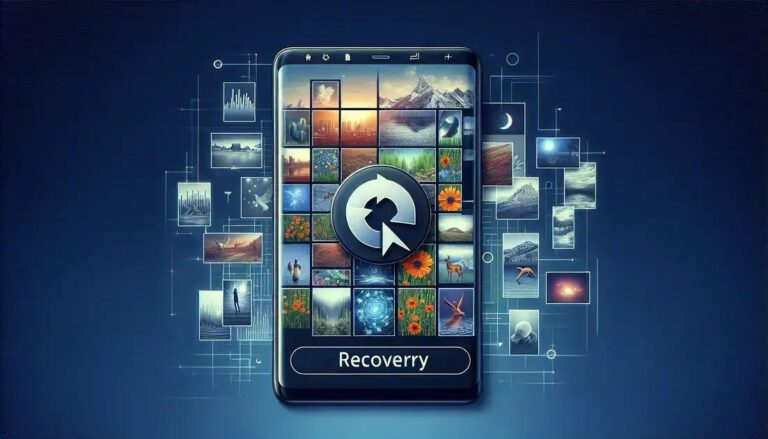Deleted Images? Recover Everything With Free Tools
Have you ever lost precious pictures and felt that panicky sensation? **Recover photos** isn’t just about retrieving files; it’s about restoring memories that kindle emotions and stories from our past. With the right techniques, you can bring back those cherished snapshots and revive moments you thought were gone forever.
Imagine finding an old photo album, only to discover some images missing. Frustrating, right? But fear not; there are solutions at your fingertips. Exploring various recovery techniques not only brings back lost images but also recovers bits of happiness.
Curious about how it works? Whether a tech novice or a seasoned pro, learning to **recover photos** can be an empowering journey. Dive into this guide and uncover practical methods that suit your needs while ensuring your memories remain intact and vibrant.
Understanding Photo Recovery Methods
Photo recovery is a vital process for retrieving lost or deleted images from various storage devices such as computers, smartphones, and memory cards. Different methods are available, each suited to specific scenarios and device types.
1. Software-Based Recovery: One common approach is using software tools designed for photo recovery. These programs can scan storage devices for recoverable images. Options like Recuva and PhotoRec are popular because of their user-friendly interfaces and comprehensive search capabilities. These tools often allow previewing recoverable files before restoration, making them ideal for DIY recovery efforts.
2. Professional Data Recovery Services: In cases where software doesn’t suffice, professional services can be crucial. Companies specializing in data recovery have advanced hardware and techniques to retrieve images even from physically damaged devices. Services like DriveSavers and Ontrack offer high success rates but can be costly. They are best suited for particularly valuable or irreplaceable photographs.
3. Cloud-Based Recovery: Many users store photos in cloud services like Google Photos or Apple iCloud, which offer recovery options from the cloud itself. These platforms often keep deleted photos for a limited time, allowing easy recovery if accessed promptly. This method requires an active internet connection and is effective for users who routinely back up to the cloud.
Understanding these methods allows users to make informed decisions on how to recover their images effectively, ensuring that cherished memories are not lost forever.
Essential Tools For Successful Recovery
Recovering lost photos can seem daunting, but with the right essential tools, the process becomes much more manageable. Here’s a look at some of the most effective tools you should consider.
1. Recuva: Known for its user-friendly interface, Recuva is perfect for beginners. It offers deep scan capabilities to find lost images, making it ideal for recovering photos from accidentally deleted files. Available for free, with a premium version offering advanced features, it’s a cost-effective solution for most users.
2. Disk Drill: Disk Drill is versatile and can recover data from a wide range of devices. It’s equipped with advanced features like partition recovery and supports multiple file systems. Its intuitive design allows for ease of use across both Windows and Mac systems. Disk Drill offers a trial version that lets you recover a limited amount of data.
3. Stellar Photo Recovery: This tool specializes in photo recovery, offering superior results for images. It supports nearly every image format and is compatible with numerous storage devices. Stellar Photo Recovery is a bit pricier than others, but its efficiency makes it worthwhile for those with numerous or large files.
Leveraging these tools can significantly improve your chances of recovering precious photos. By choosing a tool tailored to your specific needs, you can effectively retrieve lost or deleted images without needing expert intervention.
Step-By-Step Guide To Recovering Photos
Successfully recovering lost photos can be achieved by following a few structured steps. These methods help ensure that you maximize the chances of retrieving your valuable images.
1. Stop Using the Device: Immediately cease using the device from which photos were lost. Continued use can overwrite data, making recovery impossible.
2. Choose Reliable Recovery Software: Select a reputable photo recovery software such as Recuva, Disk Drill, or Stellar Photo Recovery. These programs are equipped with advanced algorithms that search for recoverable files.
3. Install and Run the Software: Install your chosen software on a different device or external drive to avoid overwriting files. Follow the instructions to allow the software to scan your device.
4. Scan the Device: Initiate a full scan of the affected storage device. The software will list potentially recoverable files, including thumbnails for easy identification.
5. Preview and Select Photos: Use the software’s preview function to confirm the files you wish to recover. Carefully select the images that need restoration.
6. Save the Recovered Files: Always save the recovered files to a new location, such as an external hard drive or cloud storage, to ensure they remain safe from future data loss issues.
Implementing these steps can greatly improve your odds of photo recovery, ensuring that your memories aren’t lost forever.
Avoiding Common Pitfalls In Photo Recovery
Avoiding pitfalls in the photo recovery process is vital for safeguarding your images and ensuring successful retrieval. Recognizing these potential mistakes can prevent data loss and frustration.
1. Continuing to Use the Affected Device: One of the biggest pitfalls is continuing to use the device from which photos were lost. This can lead to overwriting the very data you hope to recover. Immediately cease usage to maximize recovery potential.
2. Choosing Inappropriate Software: Selecting the wrong recovery software can result in incomplete retrievals or corrupted files. Opt for reputable tools like Recuva or Disk Drill to enhance recovery odds.
3. Overwriting Recovered Files: Save recovered images to a different location to avoid overwriting existing data. Use external drives or cloud storage for safety.
4. Ignoring Backup Options: Overlooking regular backups increases reliance on recovery processes. Establish a routine to back up your photos using cloud services or external drives to safeguard against future loss.
5. Rushing the Recovery Process: Photo recovery requires patience. Hasty actions can lead to errors and incomplete recoveries. Follow the recovery software’s instructions carefully and allow adequate time for each step.
Being aware of and avoiding these common pitfalls can significantly improve your photo recovery experience, helping you reclaim your treasured memories successfully.
FAQ – Common Questions About Photo Recovery
What is the first step in photo recovery after data loss?
The first step is to stop using the device to avoid overwriting any recoverable data.
Which software is recommended for recovering lost photos?
Reputable software like Recuva, Disk Drill, and Stellar Photo Recovery are recommended for retrieving lost images effectively.
Can I recover photos from a physically damaged device?
Yes, but for physically damaged devices, professional data recovery services are often required for successful retrieval.
How can I avoid future data loss?
Regularly backing up your photos using cloud services or external drives is essential to prevent future data loss.
Is it safe to save recovered files back to the original device?
No, always save recovered files to a different location to prevent overwriting existing data and future data loss.
Why shouldn’t I rush the photo recovery process?
Rushing can lead to mistakes during recovery, such as incomplete files being saved, so it’s crucial to follow the process carefully.






